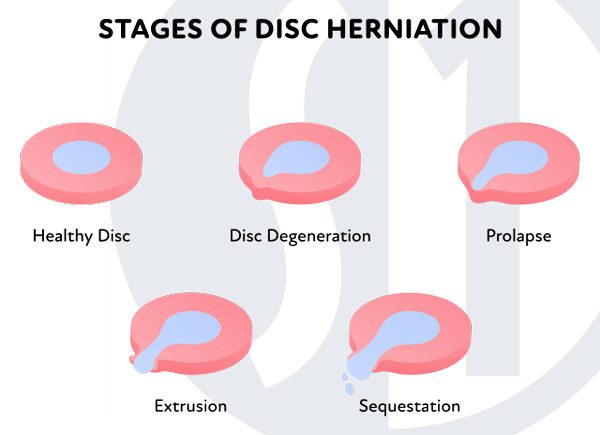Prolapsed Disc
A Common Form of Disc Deterioration
A prolapsed disc is a condition that is commonly referred to in several different ways, including a ruptured disc or a slipped disc. These terms indicate that a portion of a disc’s gel-like nuclear material has leaked out into the spinal canal through a tear or split in the disc’s layered, cartilaginous outer wall. This condition can occur at any level of the spine, but it is most frequently found in the lower back, where the lumbar vertebrae and discs bear much of the body’s weight, and where the body’s ongoing movements produce significant stress on the spine over time.
Disc degeneration often occurs in several stages, and disc prolapse takes place at a relatively early stage. When a disc becomes thinner, drier or weaker due to age or injury, it can begin to protrude beyond its normal position between the vertebrae. A prolapsed can eventually lead to a full herniation, or tearing, of the disc’s outer wall and the subsequent extrusion of nuclear material.
Diagnosing prolapse will include an exam, a discussion of your medical history, and diagnostic imaging to confirm the diagnosis. SpineOne treats prolapse with a combination of rest, anti-inflammatory medication, physical therapy, and anti-inflammatory, minimally-invasive therapies. These treatments offer effective and lasting relief from this condition and also provide an alternative to open back surgery. Patients who follow this treatment plan report significant reduction of their pain and improvement of their range of motion and quality of life.
Discuss a Prolapsed Disc with a Specialist
Prolapsed Disc Symptoms
Symptoms are usually related to compression of the spinal cord or a nerve root by displaced disc material. These symptoms can include:
- Local aching and pain
- Shooting pain into the upper or lower extremities
- Radiating symptoms like tingling, numbness and muscle weakness
